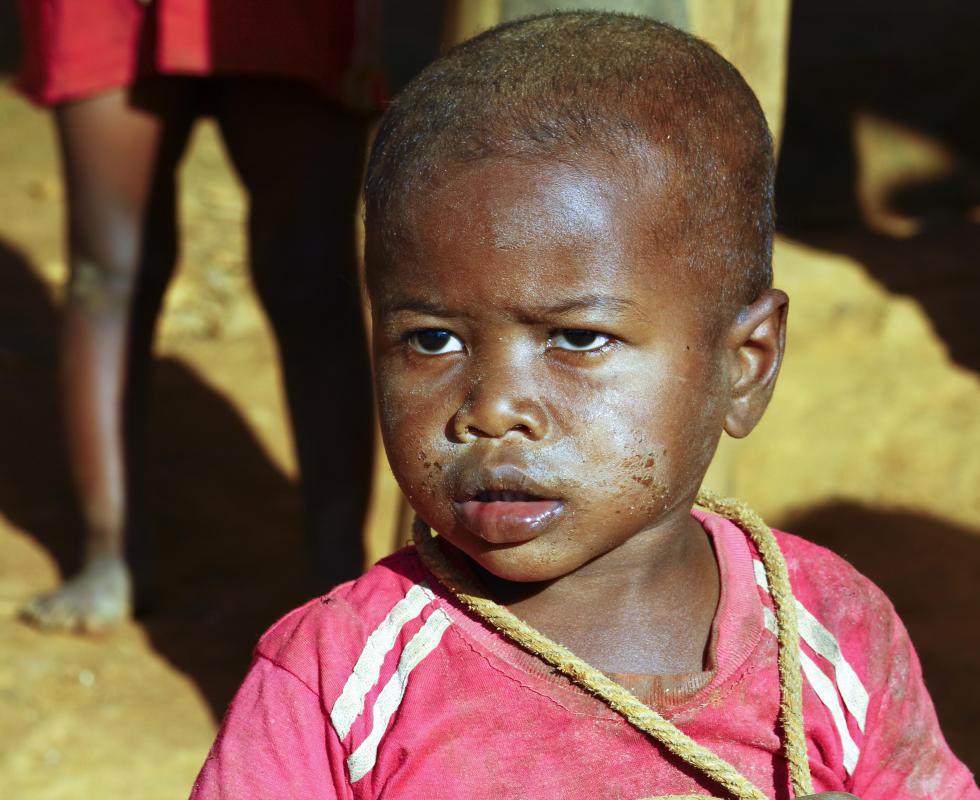At TheHealthBoard, we're committed to delivering accurate, trustworthy information. Our expert-authored content is rigorously fact-checked and sourced from credible authorities. Discover how we uphold the highest standards in providing you with reliable knowledge.
What is Emaciation?
A person or animal suffering from emaciation has an extremely low body weight. This symptom of a variety of diseases or conditions like starvation is fairly easy to recognize. The human or animal looks severely underweight, with many bones sticking out prominently. Depending on its cause, emaciation may have other features, and while from the outside these symptoms look severe, on the inside of the body it is more dangerous, as most of the body’s systems aren't provided with the nutrition required to function well or normally. The more severe low body weight is, the more risk this poses.
This condition has numerous causes, and things like involuntary starvation should not be overlooked. In areas where poverty is extreme, few residents may get the nutrition they need and they may begin to show signs of emaciation. Appearance isn’t the only issue, and starvation is life-threatening — claiming the lives of about 16,000 children a day, in direct or indirect forms. The profound state of malnutrition that accompanies emaciation can either result in conditions like organ shut-down or it makes people so vulnerable to disease that they cannot fight any form of infection.

Certain forms of starvation are potentially easier to prevent because they arise not from lack of food access, but from eating disorders like anorexia and bulimia. In the most severe cases, sufferers of these conditions become emaciated too, with weights that are considered well below normal. A diagnostic criterion on what precisely constitutes emaciation varies. It’s often defined as weight one half to one third less than expected normal body weight.

With eating disorders, the outward appearance can change dramatically, though the person who is ill is seldom able to see that he or she is far too thin. As fewer calories fuel the body, organ failure can occur, and anorexics are especially vulnerable to developing life-threatening heart conditions. Any type of extreme low weight may lead to changes in mood, a pervasive sense of low energy, and a complete weakening of the immune system.

In developing countries, diseases like kwashiorkor may be a complication of being emaciated. This form of low body weight has a recognizable appearance with an abdomen that is distended, while the upper ribs are prominent. Vulnerability to disease is high with this illness, which is typically due not only to inadequate food, but inadequate intake of high protein foods.

Additional causes are varied. Cancer and HIV can result in striking weight loss and wasting of the muscles in a condition called cachexia. This particularly occurs in people who are at end stages of these illnesses. Any illness that fails to synthesize nutrients properly might also be related to emaciation or the cause of it. In all instances, this symptom is extremely serious and requires immediate intervention.
AS FEATURED ON:
AS FEATURED ON:















Discussion Comments
My aunt is a retired teacher and talked about a student she had one year. She taught first grade and said this little boy was the skinniest child she had ever seen and he never seemed to grow or gain any weight, plus, he always looked dirty.
She reported her concerns to the principal, who call social services. The child's mother was never home, and he mostly subsisted on cold cereal. The mother had never filed paperwork to get him a free or reduced lunch. He said his grandmother bought clothes for him until she died, and then his mother pretty much left him to his own devices. He was placed in foster care.
I went to high school with a girl who had anorexia. She was so emaciated, it was scary. I didn't know her well, but I remember someone saying, "You've lost so much weight! You're so skinny!" And she said, "No! I'm so fat! I can hardly stand to look at myself in the mirror!" And she believed it.
When we started back to school in the fall, we heard she had been taken to an inpatient residential treatment center for people with eating disorders. I don't know what ever happened to her. I hope she was able to recover, but so many girls die when they get to that point. Or, they'll get better in treatment and relapse when they get home. So sad.
Post your comments